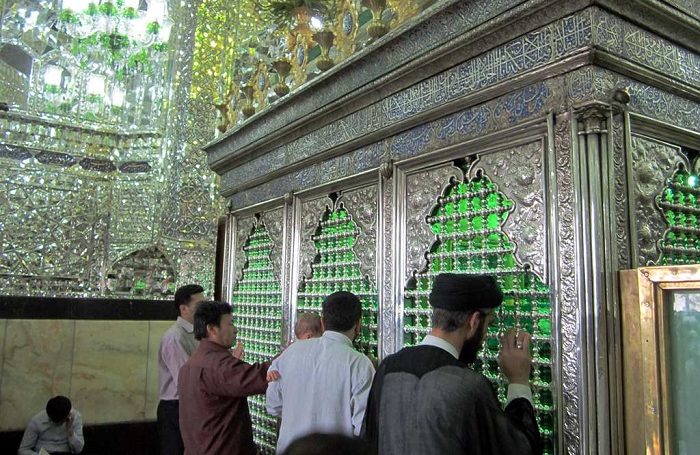
Throughout history religion has effectively served as an instrument or even a weapon of war. This strategy was also used during the Iran-Iraq war. During the war each side strategically mixed religion and politics to garner internal allegiance and external support. Both Saddam Hussein and Ayatollah Ruhollah Khomeini were eager to stoke the fires of religion and ancient animosities to mobilize followers, while simultaneously having an ulterior agenda. As such, each side was guilty of steering rhetoric to fit the framework that was most advantageous to them. This successfully facilitated unity within their respective countries and division within the region.
Understanding the strategic importance of religion, Saddam’s quest for territorial acquisition was presented to his people and the international community as an attempt to curb Iran’s Shia revivalism, rhetoric and expansionist efforts. This exclusivist mentality helped set the conditions to justify the invasion, use of force against Iran and the sacrifices of his people. However, Saddam was also undoubtedly concerned about Iranian revolutionary ideology penetrating Iraq. Nonetheless, Saddam’s desire for Iraqi hegemony played a dominant role in his decision to invade Iran. Using the rhetoric of the nascent Islamic Republic to Iraq’s advantage, Saddam had the necessary conditions available to garner support and manipulate the masses, including his Arab neighbors.
The influence of religion on politics was deeply strategic and helped facilitate adherence to Saddam’s strategy of invasion and war. He utilized sectarianism as a weapon of war by effectively linking Sunnism to religious nationalism. By strategically politicizing ancient Sunni-versus-Shia sectarianism he created a sense of national unity in support of the nation’s Sunni/Arab identity against the Shia/Persians. Additionally, Iraq was defining the war in terms of the battles the early Arabs fought in the seventh century against the Persians. As a result of this strategy, the conflict was shaped in the context of Arab against Persian, Muslim against infidel and the Prophet’s armies versus Zoroastrian fire worshippers. This played on the fears of Sunni Arab nations and generated support. It also proved to be an effective tool, because Arab states feared the Iranian regime’s provocative rhetoric, expansionist policies and activities in the region. The result was the formation of a strong coalition to defeat Iran, its strategy of revolution and Shia revivalism.
On the Iranian side, Khomeini and other Iranian leadership framed the war as one for the defense not only for Iran, but of Islam and the revolution. Moreover, Iranian leadership actively sought to export the Islamic Revolution to other countries, particularly those with Shia populations such as Iraq. Overall, the new government strategically used the sectarian elements of the war to its advantage and blurred national boundaries, parsimoniously dividing the world into good (Shia) and evil (Sunni). As such, while Iranian politicians were steering their religious rhetoric to fit their interests and agendas, they heightened the concern of neighboring Sunni nations who had Shia populations.
Khomeini’s attempt to inspire Islamic revivalism and unity on one hand, and supporting Shia groups in Pakistan, Lebanon, Iraq, Afghanistan and Bahrain on the other, had transformed Iran into a provocative agitator of Shia communities in Muslim countries. This further solidified the apprehension and suspicion of Sunni nations, such as Saudi Arabia. By extension, this greatly enhanced Saddam’s ability to use religion as a tool of war to attempt to acquire Iranian territory and regional dominance. “Not since the first Safavid-Ottoman war in the sixteenth century, and the Shia-Sunni character of that war, has ideology and propaganda played so major a role in a conflict between Iran and a neighboring power.”
Further Reading on E-International Relations
- Opinion – The Iranian Regime’s Future Post Soleimani
- The Challenges and Inconsistencies of the Iran-Pakistan Relationship
- With Hezbollah’s Retaliation Strategy in Disarray, Israel and Iran Brace for War
- Trump is Right About Iran, Yet Wrong
- Opinion – Iran at the Crossroads Pending Trump’s Return
- Engaging Iran